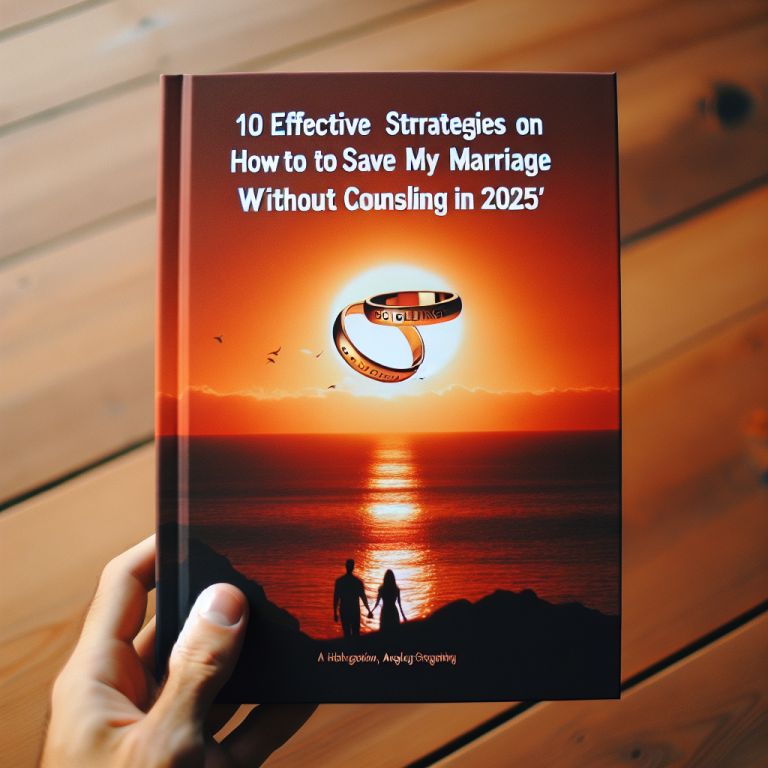How to Become More Attractive by Mastering the Art of Deep Conversations
Understanding the Importance of Deep Conversations
What Makes a Conversation “Deep”?
Deep conversations go beyond the surface level. They are those moments when you connect with another person on a much higher wavelength. You know, the stuff that makes a gathering not just a party but an experience! Topics like aspirations, dreams, and fears tend to generate more meaningful dialogue.
Picture this: instead of discussing the weather or the latest Netflix show, you find yourself chatting about what keeps you up at night or what you’re truly passionate about. It’s all about vulnerability; the more open you are to sharing, the more you invite that same openness from others.
In my experience, once I discovered the beauty of these kinds of chats, my relationships blossomed. Conversations became richer, and guess what? People responded positively! They felt appreciated and valued, which is a great way to become more attractive.
The Benefits of Deep Conversations
Engaging in deep conversations has a plethora of benefits. For one, they can foster better emotional connections. When you discuss meaningful topics, you create a bond that superficial chit-chat simply can’t achieve. There’s a layer of trust and understanding that forms.
You will also find that deep conversations lead to personal growth. By exploring tough topics or new ideas, I’ve learned so much about myself and my beliefs. It opens up avenues of self-discovery that can be enlightening and transformative.
Moreover, people are naturally drawn to those who can engage them intellectually. When I practice deep conversations, I see a sparkle in the other person’s eye—like people are actually listening and enjoying the exchange. It’s that energy that makes one more attractive in social settings.
How to Initiate a Deep Conversation
Starting a deep conversation isn’t as daunting as it sounds. It’s all about the right approach! Whenever I want to dive deeper, I begin with an open-ended question. Something like, “What are you most passionate about?” can kick things off beautifully.
Another trick I use is to share something personal first. If I open up about a fear or dream, it often prompts the other person to reciprocate. It sets the stage for a more genuine discussion, which is what you want at the end of the day.
Lastly, be attentive. Nodding and maintaining eye contact signals that you care about what they’re saying. Believe me, people can sense genuine interest, and it makes them more likely to engage deeply.
Building Empathy Through Active Listening
Why Listening is Key
When I think about the art of conversation, listening is at the top of my list. Active listening means fully engaging with what the other person is saying—it’s not just about waiting for your turn to talk. It’s a game-changer!
This concept has helped me tremendously. By focusing entirely on the speaker, I often discover new perspectives I hadn’t considered before. It’s like peeling back the layers of an onion; every layer reveals something new and unexpected about the person in front of me.
Moreover, listening well builds trust. When someone feels heard, they’re more likely to be open and honest. That’s a crucial ingredient for any deep conversation. Who doesn’t want to feel valued and understood, right?
Techniques for Active Listening
There are several techniques to master active listening. One simple approach is to paraphrase what the other person says. For instance, if they say, “I feel overwhelmed at work,” I might respond with, “So it sounds like you’re feeling a bit stressed out with everything going on, right?” This shows I’m paying attention and value their feelings.
Name the feelings too! Using phrases like “It seems you’re frustrated” or “You sound excited” brings an emotional dimension to your interaction. It not only helps clarify their message but also deepens the emotional connection we share.
Lastly, I always try to ask follow-up questions. This shows that I’m not just passively hearing but actively engaging with their thoughts. Questions like, “What do you think would help?” or “How did that make you feel?” take the conversation to another level and reveal deeper insights.
Responding Thoughtfully
Response can make or break a deep conversation. After really hearing someone out and offering my thoughts, I make sure my responses are genuine and considerate. I often find myself saying, “I appreciate you sharing that,” which creates a positive feedback loop.
Even when I have a different opinion, I remain respectful. It’s not about winning an argument; it’s about sharing diverse perspectives. By approaching differences this way, I not only deepen the conversation but also show respect for the other person’s views.
This kind of thoughtful responding helps in building a safe space for dialogue. People can be open-minded when they feel safe, which ultimately leads to a richer experience.”
Creating an Open and Inviting Atmosphere
Setting the Scene
Environment plays a huge role in the depth of a conversation. I’ve found that cozy settings encourage openness—whether it’s a quiet café or a comfortable living room. If people are comfortable, they’re more likely to open up!
Additionally, I recommend limiting distractions. Minimizing interruptions from screens or background noise allows the focus to shift entirely to the conversation. The more present we are, the deeper the dialogue can go.
When I’m chatting with someone, I also pay attention to my body language. Leaning slightly towards the person conveys interest and invites them to engage. A welcoming demeanor sets the right tone for profound conversations.
Encouraging Vulnerability
Vulnerability is a two-way street. To encourage it, I try leading by example. Sharing personal anecdotes or challenges establishes a tone of trust and safety.
Also, it’s essential to validate emotions. Phrases like “That must have been tough” or “I can’t imagine how you felt” help to legitimize their feelings. This creates a nurturing environment where they feel comfortable opening up.
When you set the stage for vulnerability, you invite richer discussions, and trust me, that’s when real connections are forged.
Encouraging Respectful Exchanges
Respect is the foundation of any great conversation. I always remind myself to practice patience and refrain from interrupting when someone speaks. Every person brings their own perspective, and allowing them to express it fully shows that I genuinely value their input.
I also keep an open mind. Accepting that I might not agree with everything but still respecting their viewpoint fosters a positive dialogue. It creates a safe space where people feel free to express themselves without fear of judgment.
Creating respectful exchanges not only enhances the depth of conversation but also makes participants feel appreciated as individuals. And honestly, who doesn’t want that?
Practicing Consistency in Conversations
The Importance of Repetition
Consistency is key when it comes to deepening relationships. I’ve noticed that I don’t just create a bond in one conversation. It’s a continuous process, one that unfolds over time. Repeated exchanges help build familiarity and comfort.
Making an effort to have these deep conversations regularly allows you to reconnect and delve into different aspects of one another’s lives. It’s like watering a plant—the more care you pour into these relationships, the more they flourish!
Sometimes, we think we need to have a grand conversation every time we meet, but that’s not true. Even smaller, meaningful chats can contribute to that deeper connection. Every step counts.
Being Authentic Over Time
Authenticity is crucial for longevity in conversations. If you’re always genuine, people start to trust you more. I strive to be real and true to my own emotions and experiences. This encourages others to drop their façades too.
Sharing my evolution as a person shows others that it’s okay to change their views. It makes conversations much richer when we all contribute our ongoing journeys. People relate to authenticity; it’s magnetic!
Furthermore, when I’m authentic, it invites an ongoing exchange rather than a one-time deep conversation. Trust builds over time, and that’s when lasting connections are made.
Continuing the Journey
Deep conversations are not a destination, but a journey. Life’s unpredictable, and we all go through phases. By consistently checking in with others and engaging in meaningful dialogue, we create pathways to evolve our relationships.
I find importance in setting reminders or even planning some catch-up sessions with people who matter. This way, I don’t lose touch, and we can both share our evolving stories.
In a nutshell, recognize that becoming a better conversationalist is a continuous journey of growth. With practice, you will naturally become more attractive to others through your engaging conversations!
Frequently Asked Questions
1. How can I start a deep conversation without making it awkward?
Starting with open-ended questions that invite personal insights—like asking someone about their passions or dreams—can help. Share a personal anecdote to break the ice and create a space for deeper dialogue.
2. What if the person I’m talking to doesn’t engage deeply?
Not everyone is ready for deep conversations, and that’s okay! You can still try to engage them with interesting questions, but if they prefer lighter topics, follow their lead and build rapport in that area.
3. How do I encourage someone to be vulnerable without pushing them?
Lead by example! Share your own vulnerabilities in a respectful way, and create a safe space by validating their feelings. It’s all about fostering trust and allowing them to feel comfortable expressing themselves.
4. Can deep conversations happen in a group setting?
Absolutely! While it may be a bit trickier, deep conversations can unfold in group settings. Encourage everyone to share personal stories or pose thought-provoking questions that invite less superficial dialogue.
5. How do I practice active listening in my daily conversations?
Try to intently listen and avoid interrupting. Reflect back on what you hear by paraphrasing their thoughts, and ask follow-up questions to demonstrate your interest. Make it a habit in all your conversations!
Related Content
- The Hidden Psychology Behind What Women Find Attractive in Men
- What to do when you feel unheard in your marriage
- How to Improve Your Body Language to Become Instantly More Attractive
- Why Women Are More Attracted to Men Who Know How to Listen
- What Women in Charlotte Really Want to Hear in an Online Message










